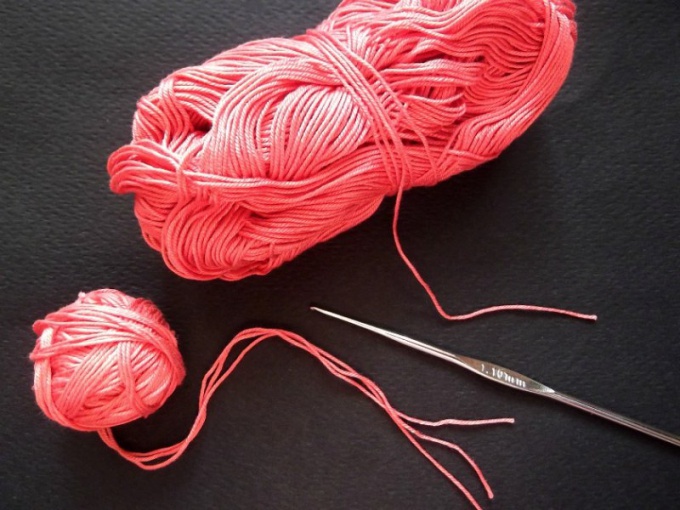Materials and tools for knitting beret
Summer berets, crocheted, must be performed from a fine yarn made from natural fibers. It can be cotton, bamboo or viscose threads. Very suitable for knitting summer things mercerized cotton, these threads are very light and pleasant to the touch. Besides, they let in a lot of cool air, thanks to which in summer, wear caps of these related threads is not hot. Except for the yarn for the manufacture of a laced summer beret you will need:
hook № 1,5-2;
- the tape;
- scissors;
rubber vein.
Measure the circumference of your head by positioning a tape measure in the middle of the forehead. It is necessary for a more accurate construction of the pattern of the beret. Draw a circle that will become the pattern of the bottom. The usual size of the diameter of the part for this part of the beret should be ½ the circumference of your head. Thus, if you have 56 size, then you need to draw a circle with a diameter of 28 cm If you wish to make a more three-dimensional model of the beret, make a pattern 2-3 cm more.
Prepare a scheme for crochet beret. You can pick up created just for this thing, or use the chart for knitting in the round wipes of a suitable size.
How to knit fishnet takes
Start knitting openwork beret crochet top. To do this, enter a chain of five loops and close them in the ring. Knit next round on the prepared circuit pattern, making the necessary allowances in each row. The canvas periodically apply to the prepared pattern.
After knitting the bottom cover proceed in reverse order, making obuvki, while the width at the lower edge of the web will not be equal to the measure of the circumference of the head. Now knit okolicach. To cap tightly to the head, add a rubber vein. Join yarn and knit on circle columns without nakida without making any increases or ubavo. Try knit fabric for okoliyska as tightly as possible.
Edge products tie lobster step". Knit this loop as well as the columns without nakida, only the direction of the work will be in the opposite direction, i.e. from left to right.
Openwork takes moisten, spread and place on smooth surface to dry. Subsequently, wash it manually and dry in a horizontal position, so the product will not deform and lose shape.
